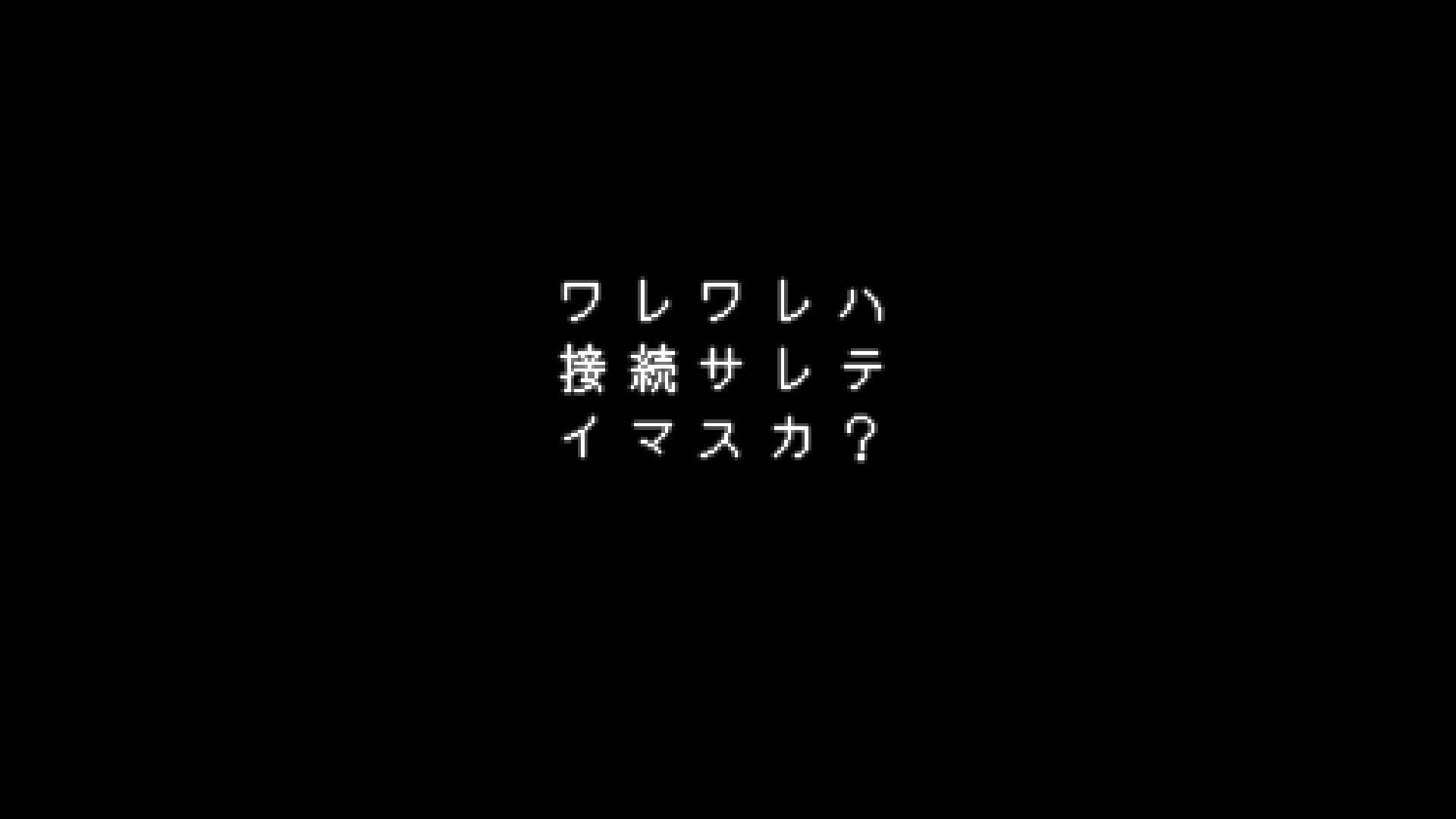
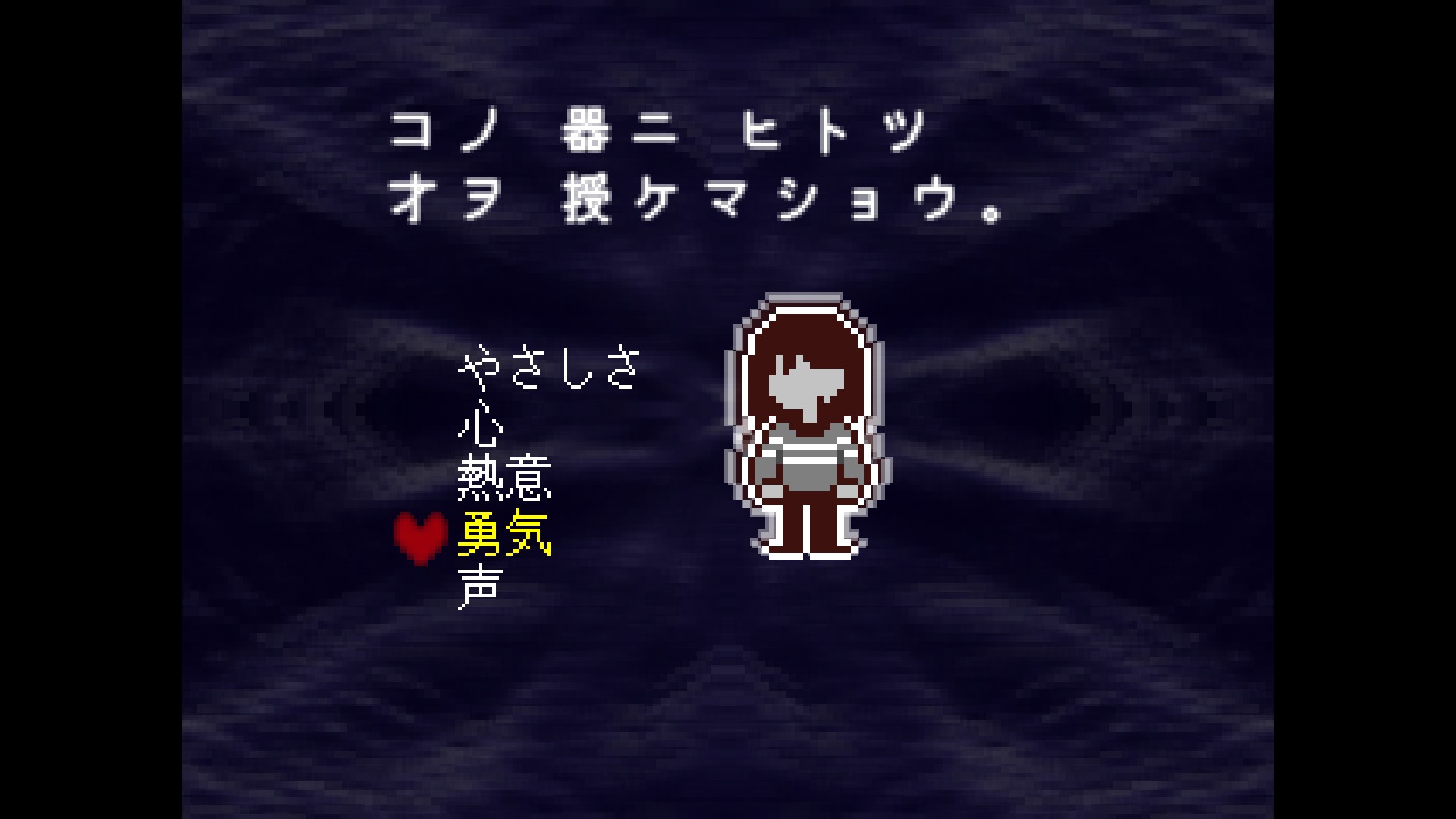
This page will focus on differences that are less important to theorycrafting and the lore. The Japanese translation mostly follows the English closely; the biggest differences are changes to jokes, puns, and references that either don't work in the Japanese language or would not be well known to Japanese people. A few minor character names are changed as well, but the main cast (Kris, Susie, Ralsei, Lancer, Noelle) all have the same names in both languages. I find the Japanese localization pretty interesting overall, since it's common for Japanese-to-English localization to be discussed, but rare for translations in the other direction to be talked about in English. Furthermore, it's clear that the English version was written first, but Toby Fox had in mind a lot of the jokes and puns that would be used for the Japanese version at the same time.


The Voice uses a mixture of katakana and kanji. Japanese is typically written in hiragana and kanji, with katakana only being used for emphasis and certain words. This quirk of writing is shared with W.D. Gaster in Undertale. A polite, formal, but very laconic speaking style is used for the voice, which is similar to the English version. The second voice which interrupts the first uses hiragana and kanji like most Japanese writing, as well as the informal and sometimes rude 2nd person pronoun お前 (omae), although they spell it entirely in hiragana. This style of speaking is shared with Chara in Undertale.
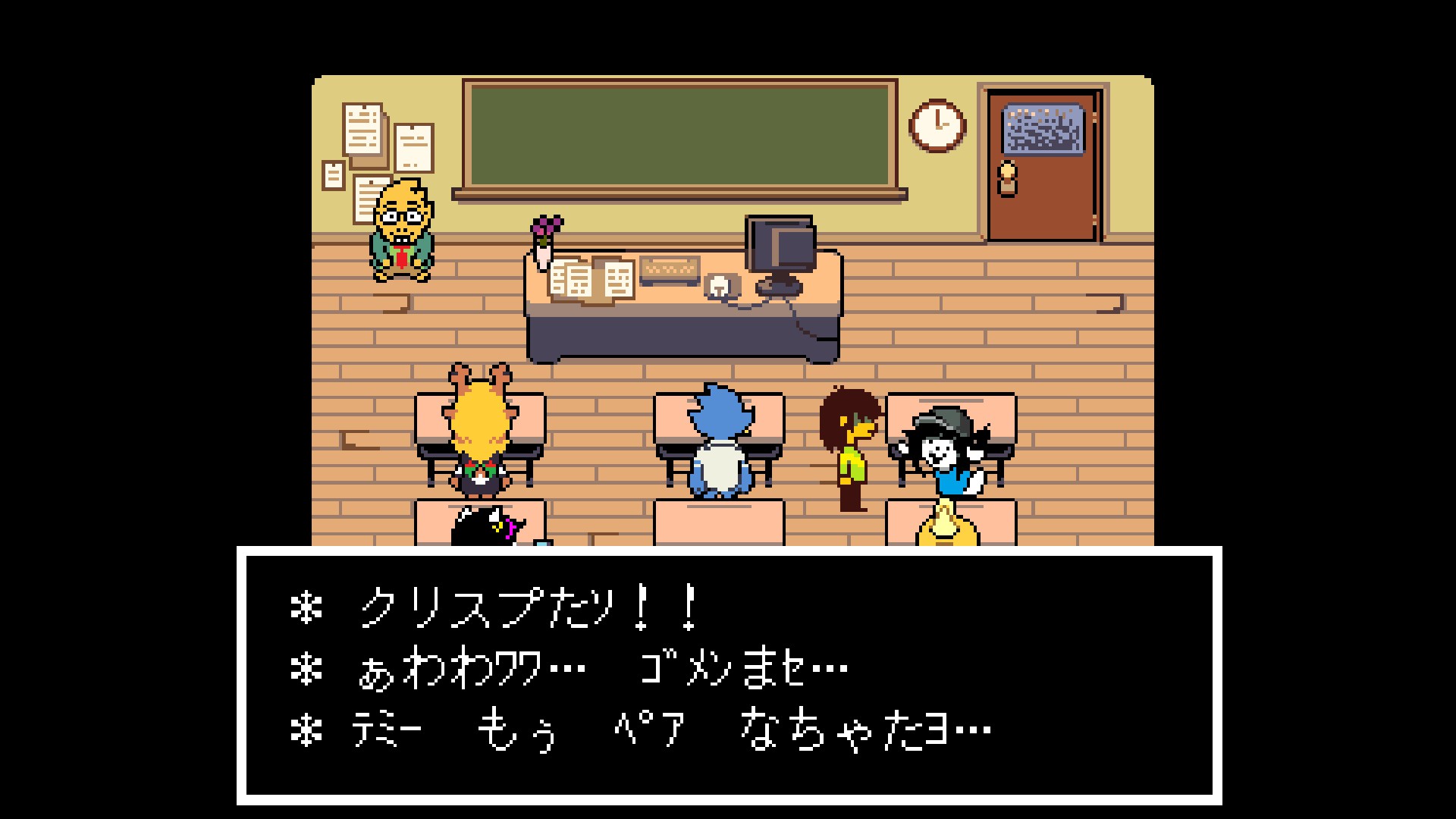
Temmie uses a style of writing similar to Gyaru-moji along with broken grammar and frequent misspellings. Her speech is still more readable to me than most gyaru-moji, probably intentionally so that players don't have difficulty with it. I find her speech to be one of the better localizations in the Japanese version, since it puts a unique spin on her speech patterns that will be readily understood by the target audience while still maintaining a similar feel to the original.
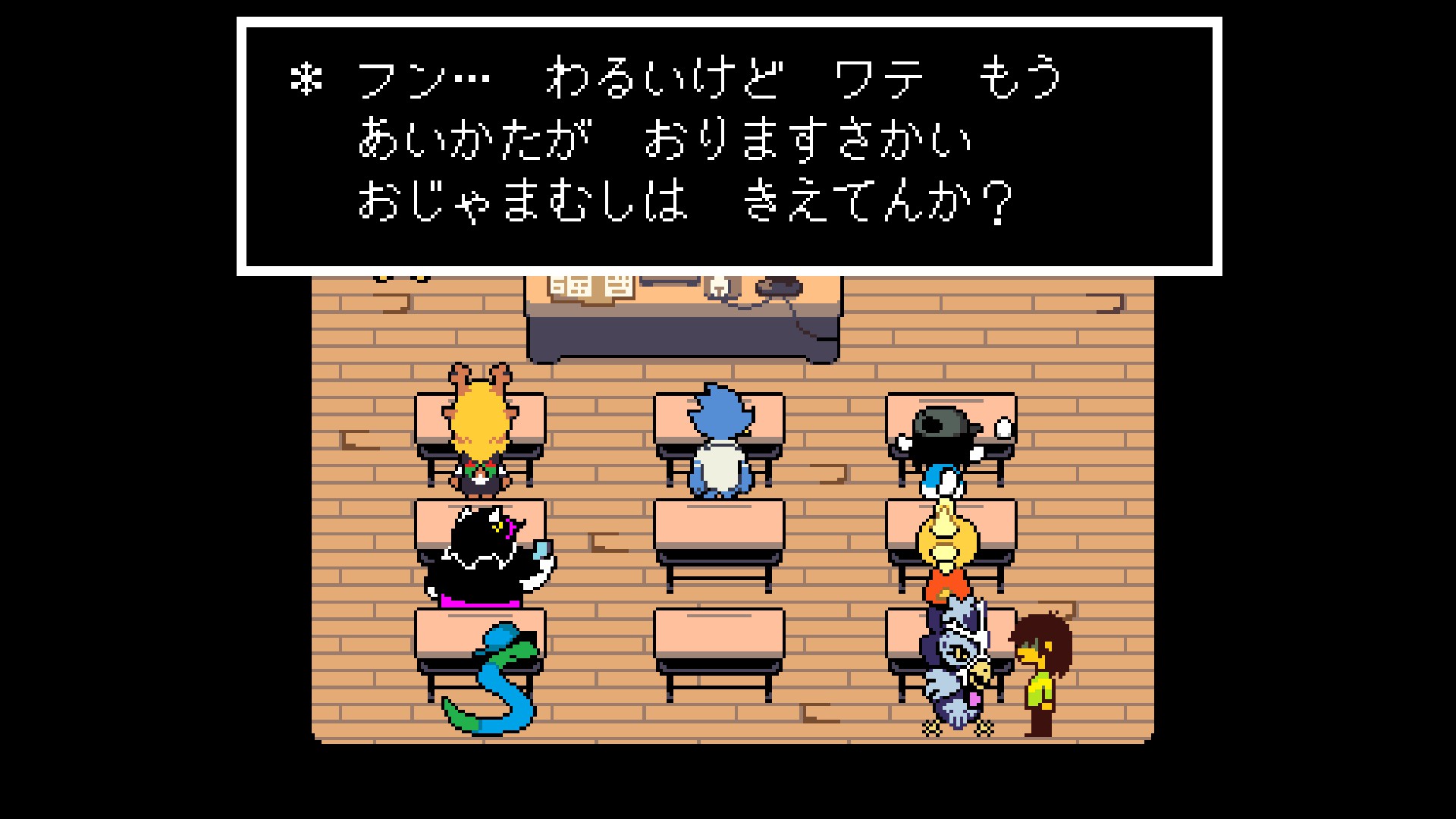
Due to the development of manzai in Osaka, Snowy, who wants to be a comedian, speaks with a stereotypical Kansai dialect. His family also uses the same dialect.
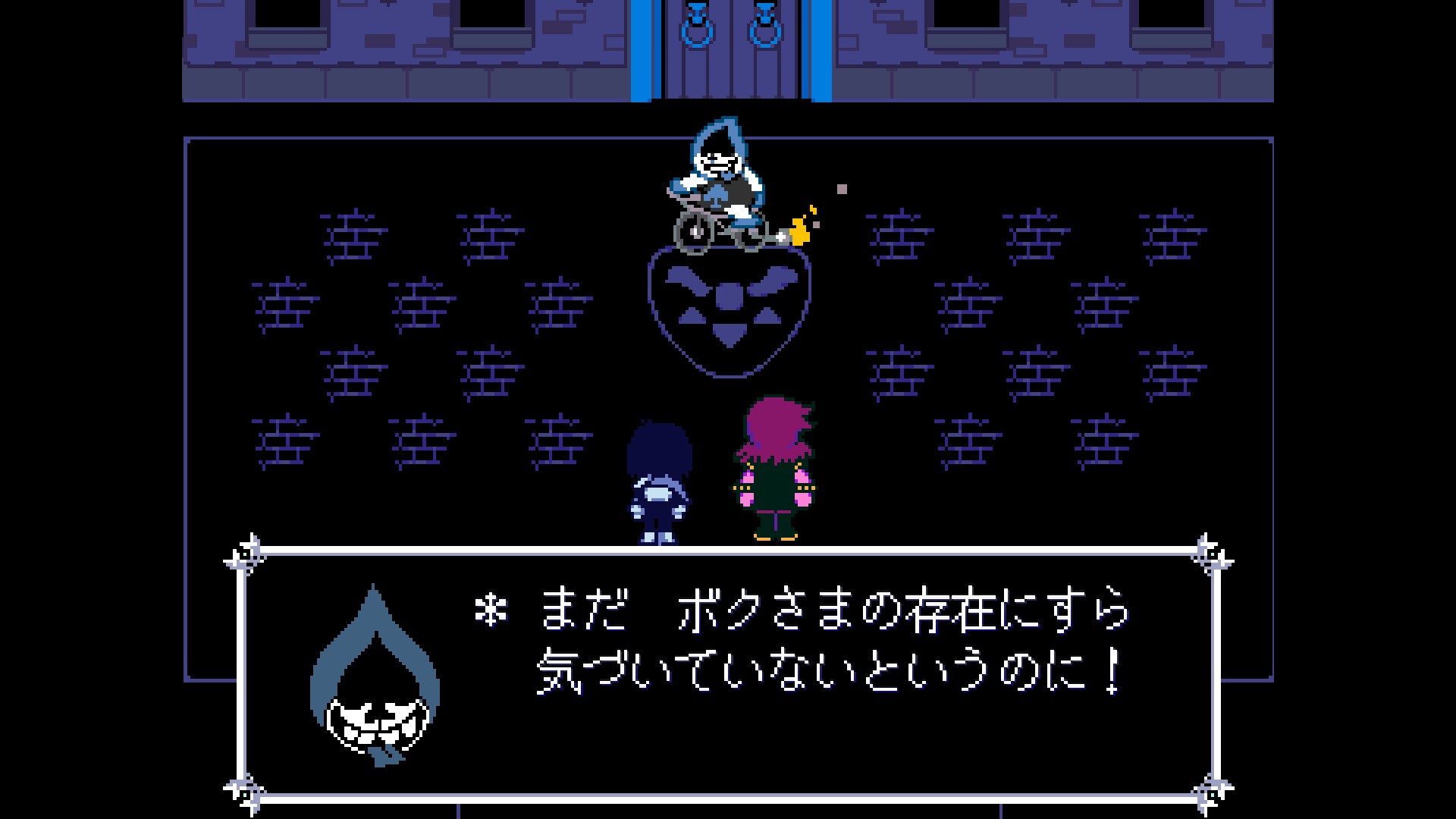
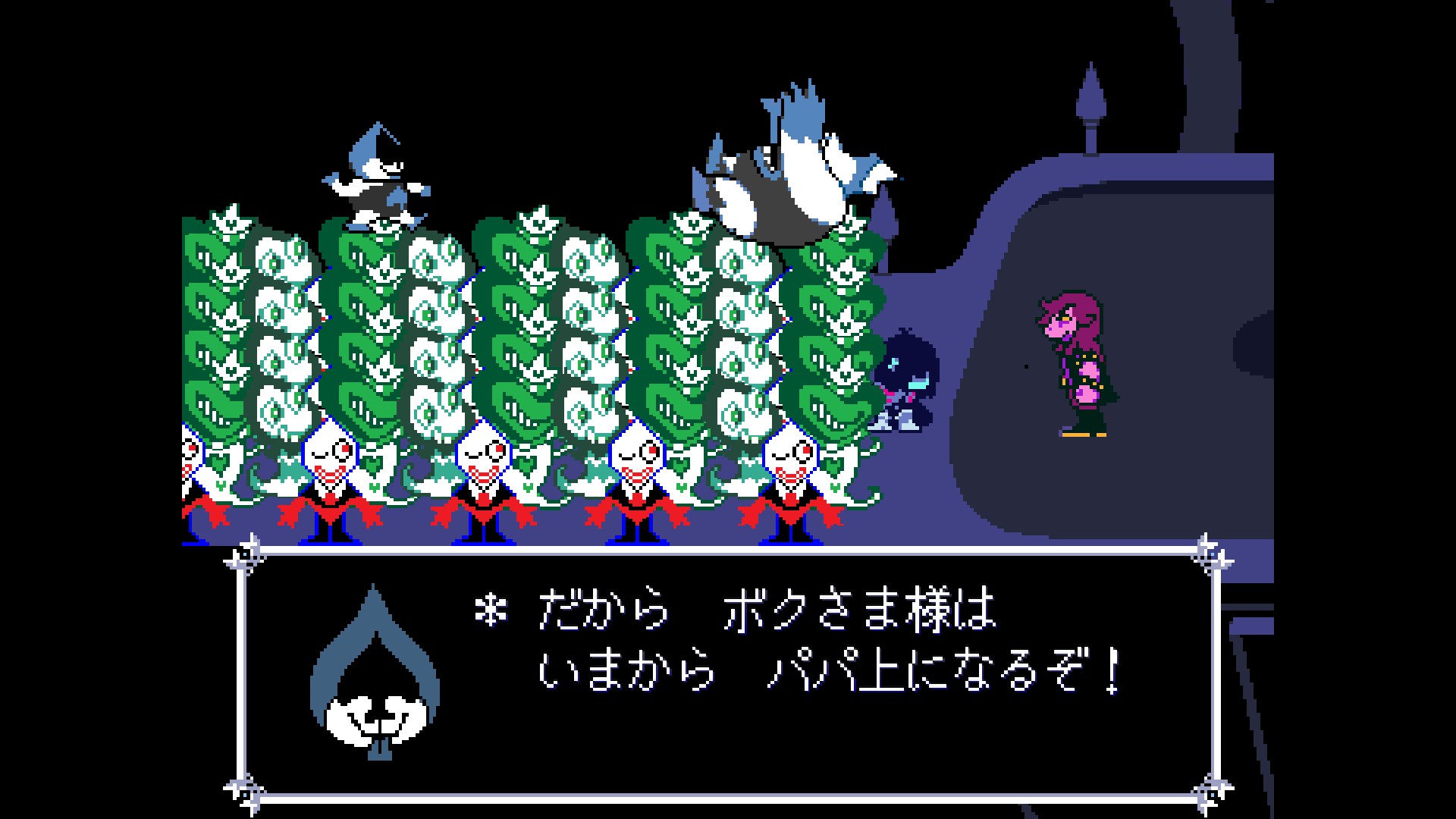
Lancer's 1st person pronoun is ボクさま (bokusama) which is a bit difficult to explain. Boku is a primarily masculine 1st person pronoun that can be used in most situations except for extremely formal ones. Sama is an honorific suffix that is added to names to indicate high levels of respect. The closest thing English has is "lord" or "my lord" but sama does not imply nobility. Using bokusama serves to make Lancer sound really childish and arrogant. When he usurps the King, he tacks on another sama to give ボクさま様 (bokusamasama), reflecting his status as the new king. He also refers to his father as パパ上 (papaue), combining a polite suffix with an informal and childish word for "dad."
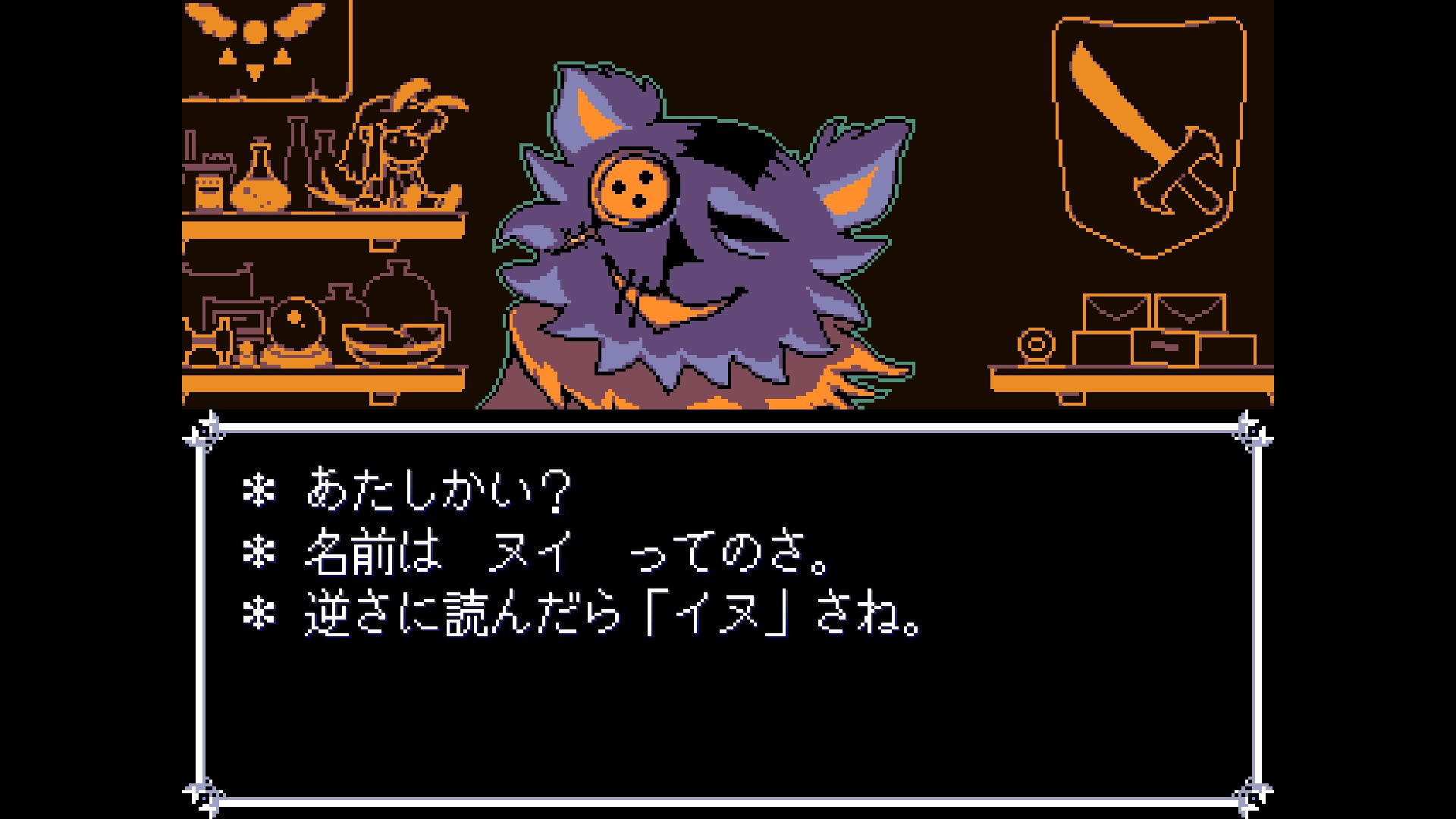
Seam is very interesting in Japanese. Their Japanese name is Nui, which like Seam is a pun relating to sewing. The verb 縫う (nuu) means "to sew," and the noun form 縫い (nui) means "sewing" or "embroidery" and is also used in the noun 縫いぐるみ (nuigurumi) referring to a stuffed animal or a plush, reflecting Seam's status as a plush in the Light World. Seam/Nui also says their name is "dog backwards," since if you reverse the kana in Nui you get イヌ (inu), which means "dog." This differs from the English version where some unused text implies that Seam is a cat.
Seam also has another huge difference in Japanese, in that their gender may be different. In English, they are consistently referred to with they/them pronouns. In Japanese they use the 1st person pronoun あたし (atashi), which is typically viewed as very feminine. Japanese mostly avoids 3rd person pronouns (and lacks gender-neutral ones in formal writing, but not in casual speech), so I never observed any 3rd person pronouns for them in Japanese. This doesn't really change much, but it was interesting.
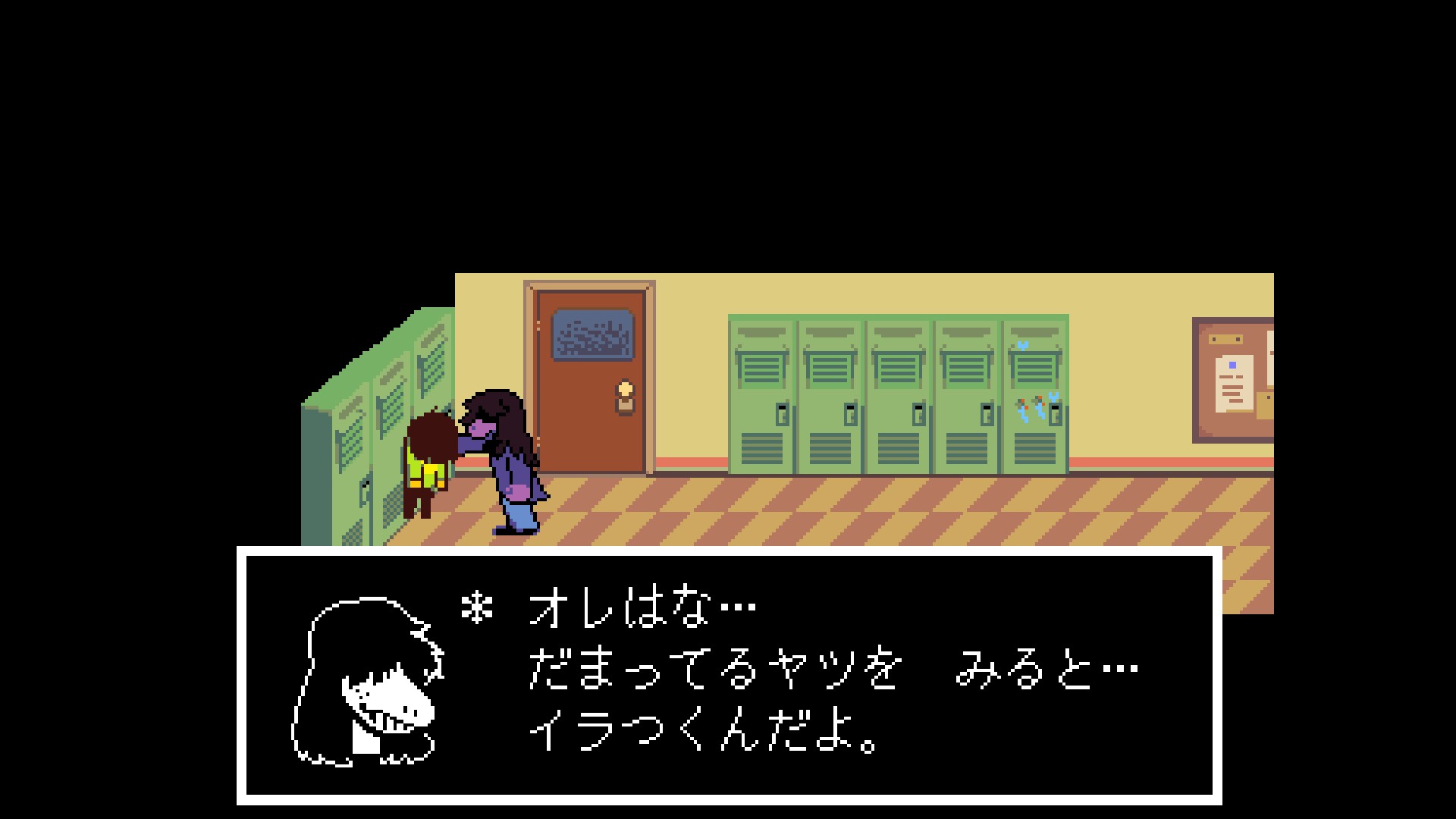
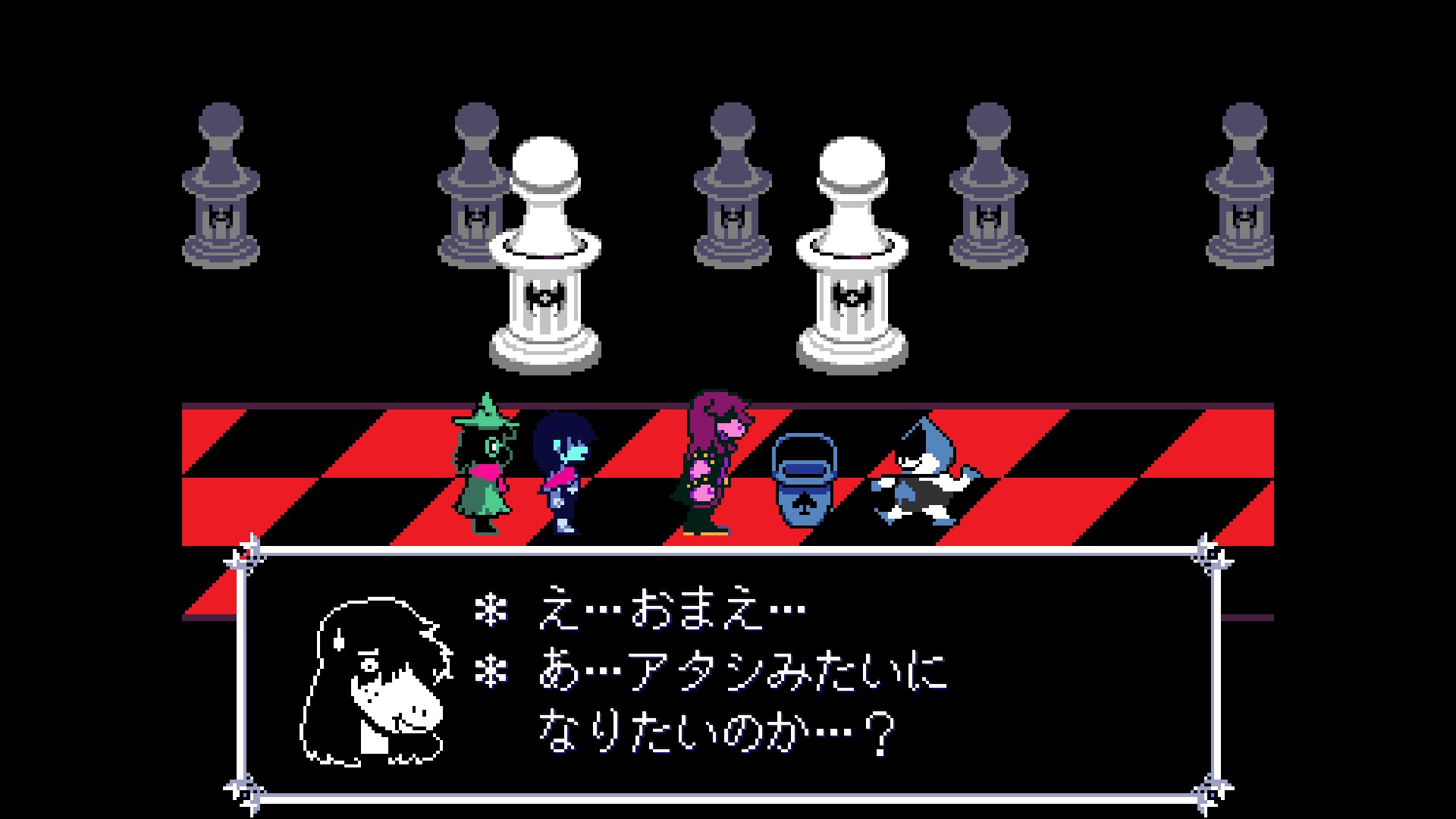
Speaking of pronouns, Susie's use of 1st person pronouns tells a lot about her character. She usually goes with オレ (ore) which is fully masculine and extremely casual, as shown in the first screenshot with her and Kris at the School. However, when she is flustered or embarassed she sometimes switches to アタシ (atashi), which as mentioned above is very feminine. Here she uses the pronoun when talking in response to Lancer saying he wants to become more like her. Susie generally uses a very rough, informal, and at times almost vulgar way of speaking as well.
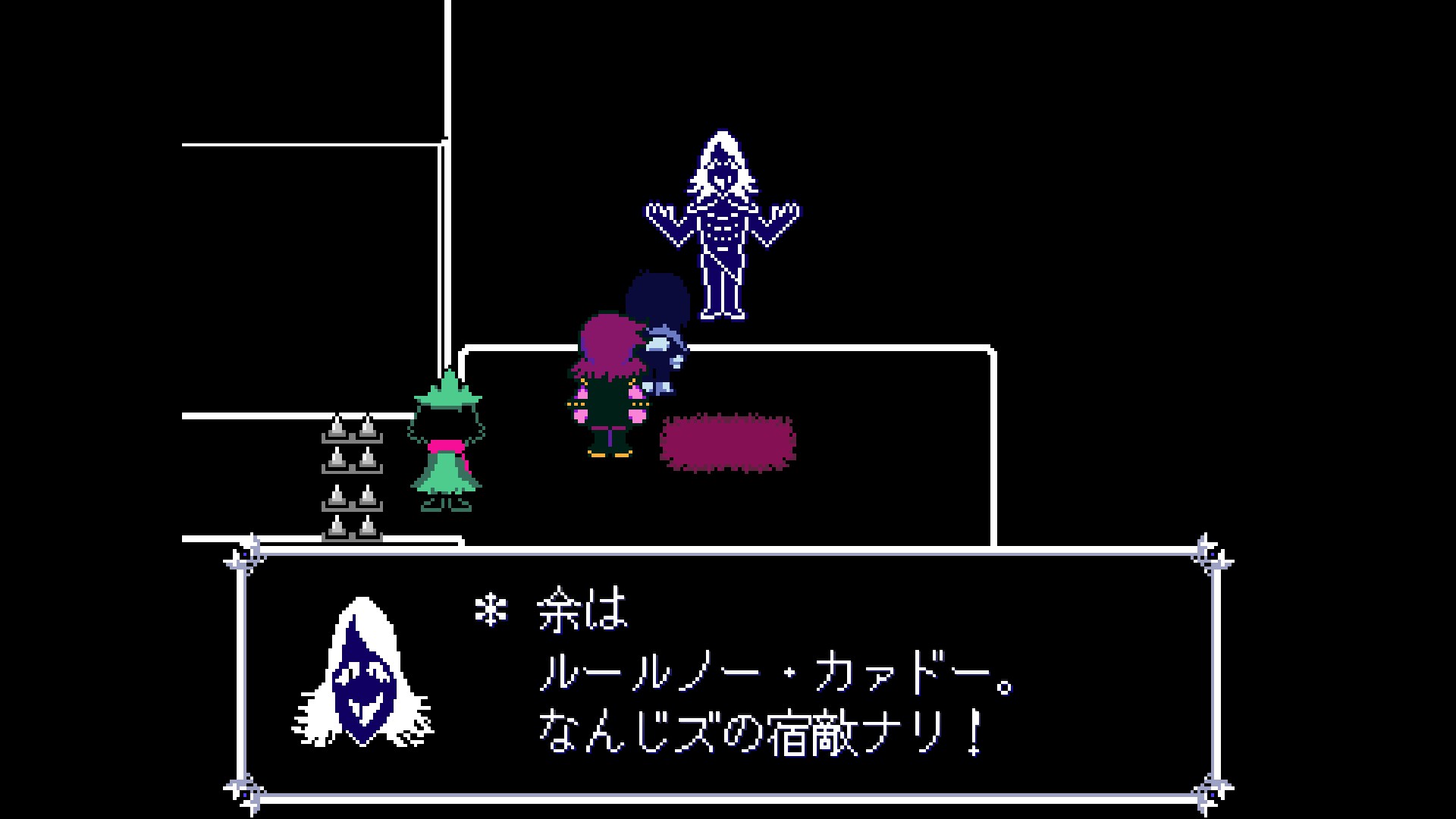
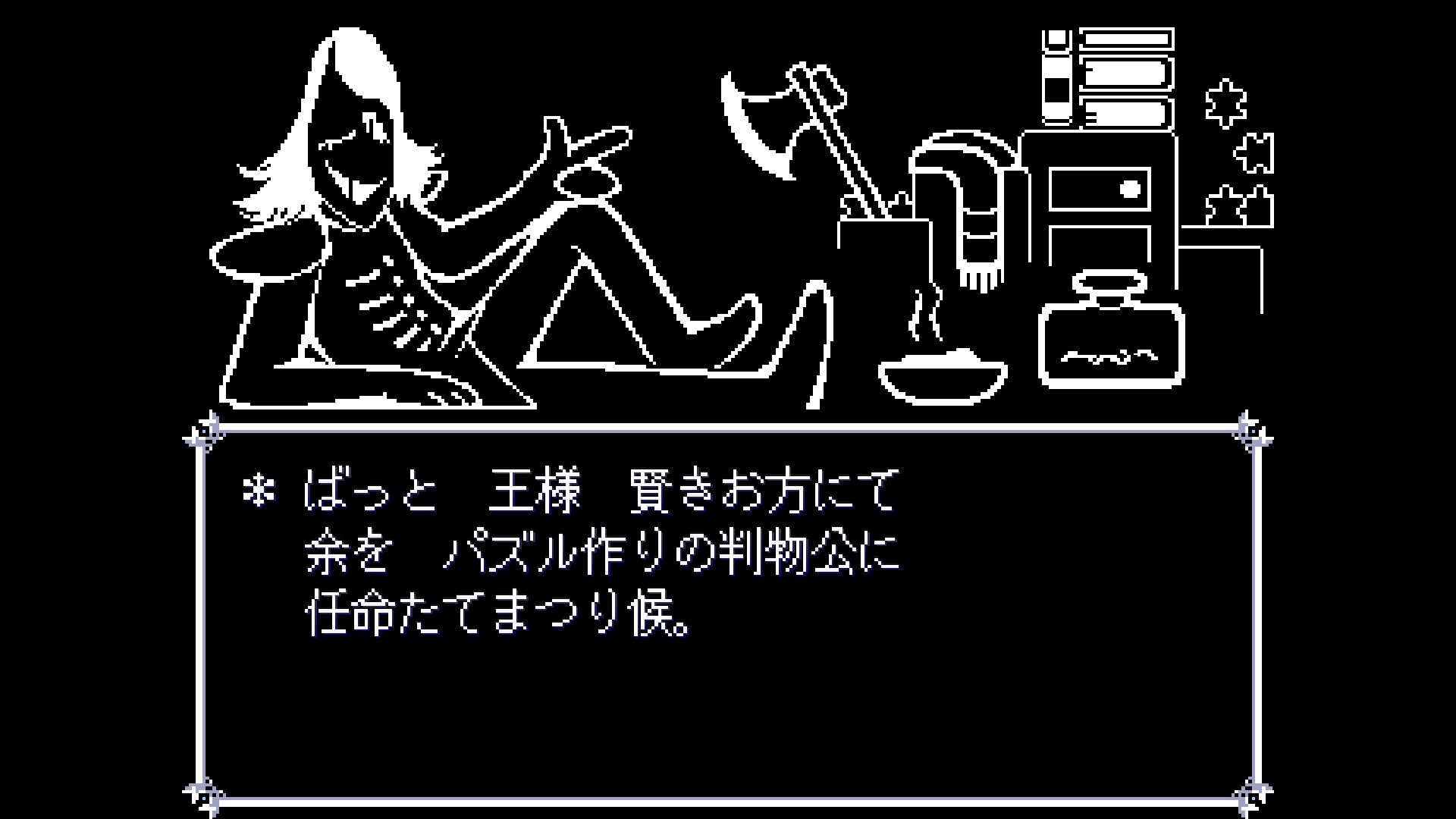
Rouxls Kaard is another localization I think is very well done. He speaks in a bizarre mix of Classical Japanese, modern slang, and English words and suffixes. Unlike in English, his grammar is mostly correct, and his speech is mostly odd due to the anachronisms mixed into "old-fashioned" speech. For example, he uses the archaic 2nd person pronoun なんじ (nanji), but then pluralizes but adding ズ (zu) which comes from the English plural -s. His 1st person pronoun is 余 (yo), which is obsolete today but was historically only used by kings and high-ranking nobility. Overall, he's probably my 2nd favorite translated character after Queen.
Jevil in Japanese isn't too different and not worth a screenshot, but he does have some interesting quirks. He tends to repeat himself in Japanese, and will say the same thing twice with a different sentence ending. All of his voice lines are also dubbed into Japanese, except for the "Bye-bye!" used when he does his final attack.
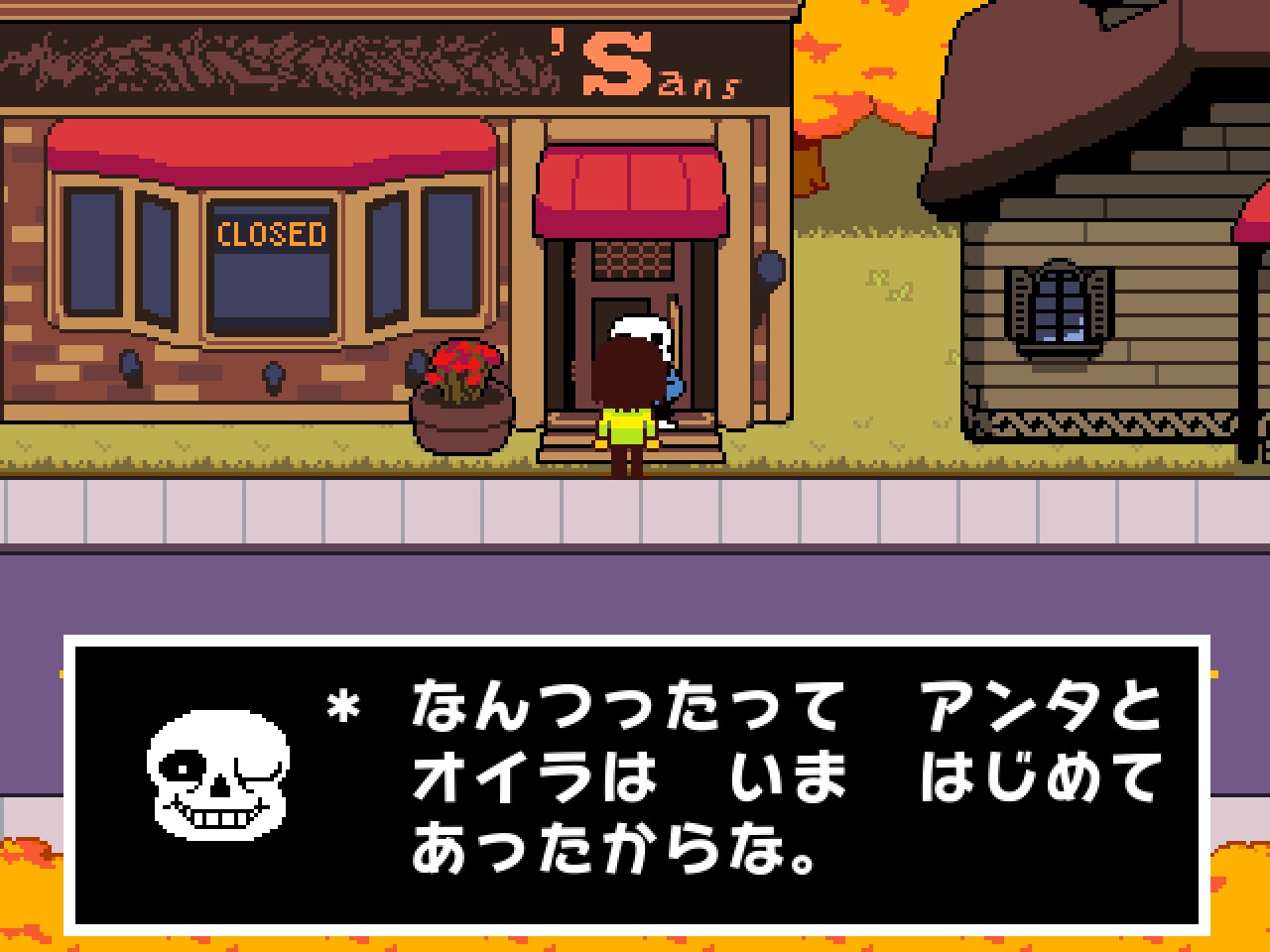
Sans has a unique font in Japanese, like he does in English. He also uses the 1st person pronoun オイラ (oira) which is masculine and somewhat dialectal. I don't really know how to explain the nuances of it but it does fit his character somewhat I guess. His translation is otherwise fairly uninteresting to me since it doesn't do anything uniquely Japanese.
Overall I felt Chapter 1's translation was weaker than the remaining chapters. That may be due to the characters, since many of them had uninteresting localizations to me, especially when compared to later chapters. It's still a high-quality translation for an indie game, and it's only uphill from here.